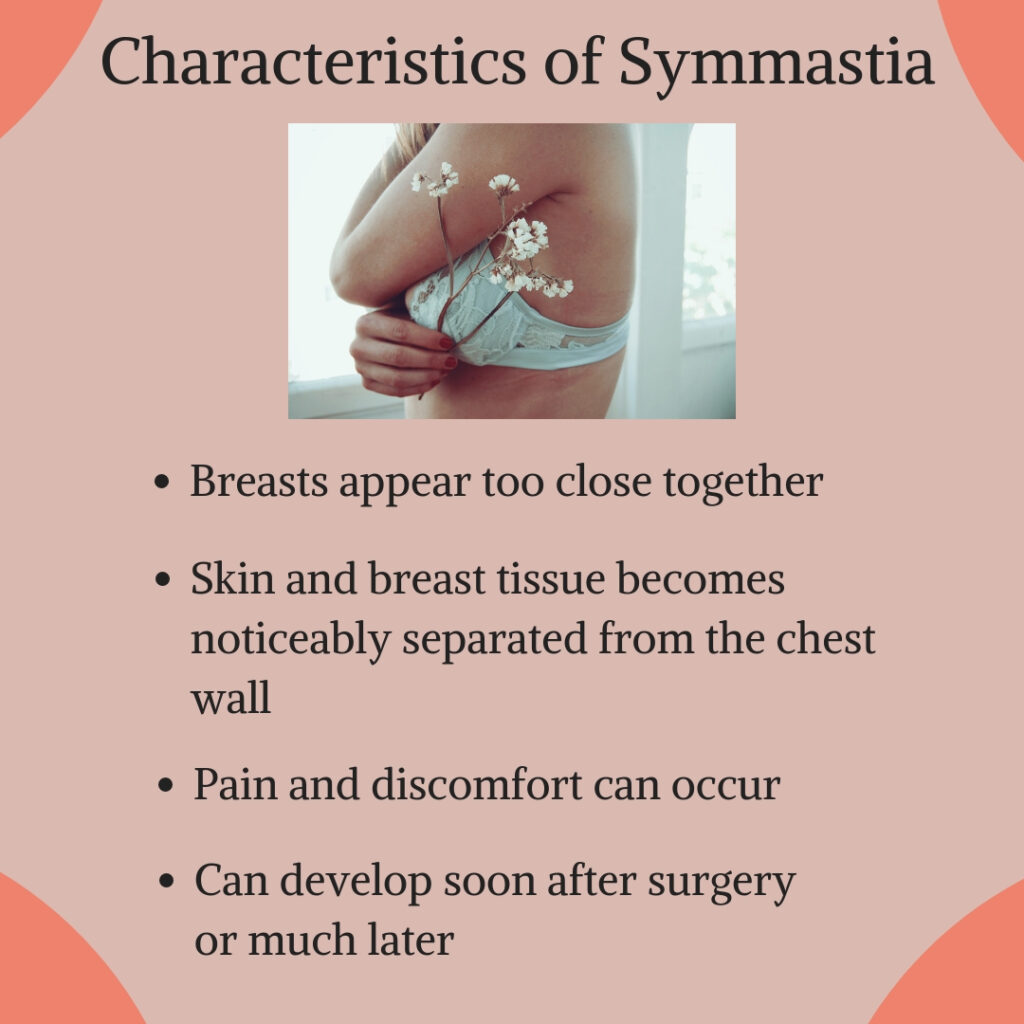October 26, 2018 | 3 minute read
Many women who look into breast augmentation surgery do so to improve the appearance of their breasts and are usually pleased with their results. Although most patients do not experience complications after their procedure, some women develop a rare and unusual condition known as symmastia. Symmastia can occur when your breast implants meet in the middle of the chest and lift the skin away from the breastbone. If you have developed this rare condition, Dr. Kimberly Henry can perform revision breast augmentation to correct symmastia and restore the breasts to a more attractive aesthetic.

What Is Symmastia?
Commonly referred to as a “uniboob” or “bread loafing,” symmastia is a condition in which the breasts fuse into one breast instead of two separate breasts. This is due to too much excess breast tissue having been removed from the cleavage area.
If your implants were placed beneath the pectoral muscle, this could cause your skin and the pectoral muscle to pull away from the sternum. The typical symptoms of symmastia are pain, discomfort, and visible distortion of the breasts. Some of the causes of symmastia may include:
- Breast implants are too large or wide for the patient’s body frame
- Implants are placed too close to the center line of the chest
- Improper placement of one or both implants
- Chest tissues, including glandular and connective tissues, or the pectoral muscles are pushing the implants closer together
How to Prevent Symmastia
Choosing a highly skilled, board-certified specialist can reduce or prevent this condition from developing. Selecting the implant size and shape that is best suited to your unique anatomy can also decrease your risk of symmastia. Dr. Henry can help you make breast augmentation choices that will significantly minimize your risk of complications while still providing you with beautiful results.

Treating Symmastia
While your surgeon can provide you with a separating bra to help with your condition, it does not offer a permanent fix. To permanently treat symmastia, you must undergo breast revision surgery. The type of revision procedure you need depends on the details of your previous breast augmentation procedure.
Submuscular Revision
If symmastia occurs after submuscular breast augmentation (placement of the breast implant beneath the pectoral muscle), the breast pocket will need to be repaired to create a more natural-looking separation between the breasts.
Subglandular Revision
When symmastia occurs in patients who have undergone subglandular breast augmentation (placement of the breast implants above the pectoral muscle), the implants may be removed during revision surgery and replaced under the muscle.
Implant Replacement
In cases where symmastia has developed as a result of having oversized breast implants, the implants may be removed and replaced with more proportionally sized implants during a revision procedure.
Capsulorrhaphy and Excess Fat Removal
Capsulorrhaphy, also known as the internal bra procedure, corrects symmastia with the placement of internal sutures to reposition the breast implants. Another option involves removing excess fat from the sternum area to separate the breasts.
If you are struggling with symmastia and wish to undergo a revision breast augmentation procedure, please schedule a consultation with Dr. Henry by calling our office at 415-924-1313.
This post was updated on October 26, 2018.

